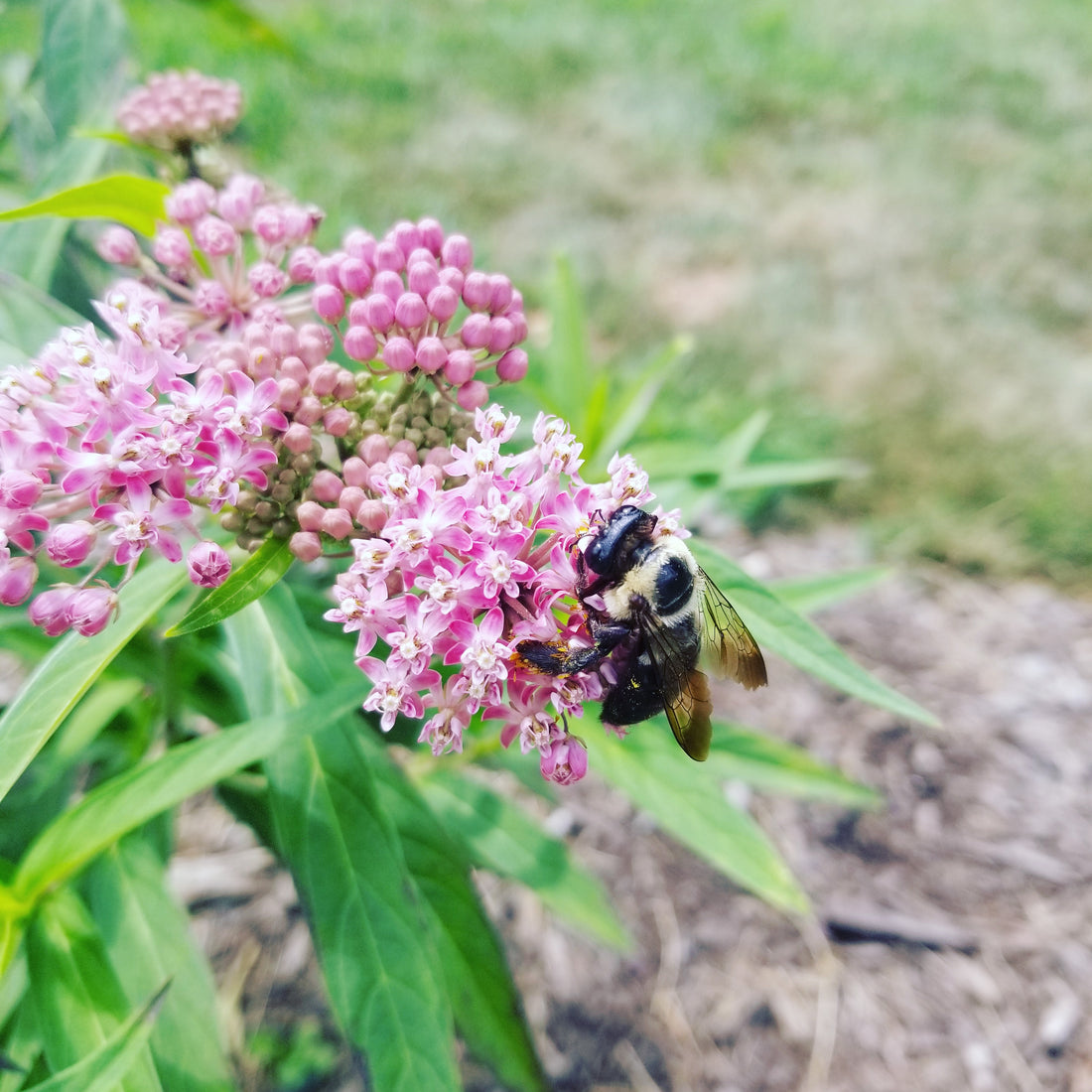Why should you grow native plants?
Implementing the use of native plants in your yard and garden helps support the natural environment and its intricate processes, while lessening the need for chemical fertilizers, pesticides, and constant watering. Since native plants have adapted to the local environment over years (more like centuries or millennia), they are much more tolerant to the various seasonal changes in temperature and precipitation. This means that native plants are better able to withstand droughts than many non-native species, which allows for a more ‘hands-off’ and sustainable approach to yard care and maintenance.
Help the birds and the bees.
Pollinators, such as butterflies and bees, typically need native plants in which they have been evolved to consume and live among in order to thrive. Without having access to these specific plants, pollinators will not have sufficient areas to rest, feed, and reproduce.

Besides these amazing insects, birds also help pollinate and spread seeds throughout the environment. Birds are attracted to various native species by the food they provide through the production of fruit such as nuts, seeds, and berries.
Water Conservation
As previously mentioned, native plants are well adapted to the local environment which means they withstand the localized weather much better than non-natives. By growing native plants and grasses in place of non-native varieties, manual watering is not needed as frequently.
The typical residential lawn is usually planted with non-native turf grass (natively from europe), which creates a less pervious surface and leads to more water run-off into our streets and sewer systems, creating a hazardous situation for floods and erosion. Native plants and grasses will help capture rainwater, preventing pollutants and sediment from entering our sewers and local rivers and streams.
Ryan’s Favorite Natives
There are so many beautiful native plant species that it's hard to choose favorites, however, below are a handful of chosen varieties with which Ryan has first hand experience growing.

Cercis canadensis - Eastern Redbud (tree)
You are most likely able to see this beauty by just driving down any major highway. It really has its moment in early spring when it begins to bud and flower bright pinkish-red flowers along its branches.

Phlox subulata - Moss Phlox
This phlox variety is a favorite due to its low-lying growth that provides a great ground cover anywhere in the garden (use it in place of turf grass). Its flowering gives a great early spring color to your garden.

Asclepias tuberosa - Butterfly Weed
There are many asclepias (known as milkweed) varieties, but this one is a favorite due to its amazing bright orange flowers. Aptly named butterfly weed because of its attraction to and resemblance in color of monarch butterflies.

Liatris spicata - Blazing Star
As the name indicates, this plant shoots up tall reaching stems that are covered with flowers ranging from white to pink to purple.

Rudbeckia fulgida - Coneflower
Coneflowers provide a simplistic yet beautiful flower among the garden. Their seed heads provide a food attraction for birds.
Avoid Cultivars
Many times you may see plants labeled as native, but they are actually cultivated or hybrid varieties. It may be hard to recognize whether a plant is a cultivar or a true native, so be sure to ask or research prior to purchasing.
Cultivars are not necessarily bad to use, as they may provide more distinctive features that lend better to landscape design, but they can dilute the true native population and the ramifications are not well known.
Resources
Virginia Native Plant Society - Conserving Wild Flowers & Places (vnps.org)
Plant Northern Virginia (NOVA) Natives (plantnovanatives.org)

